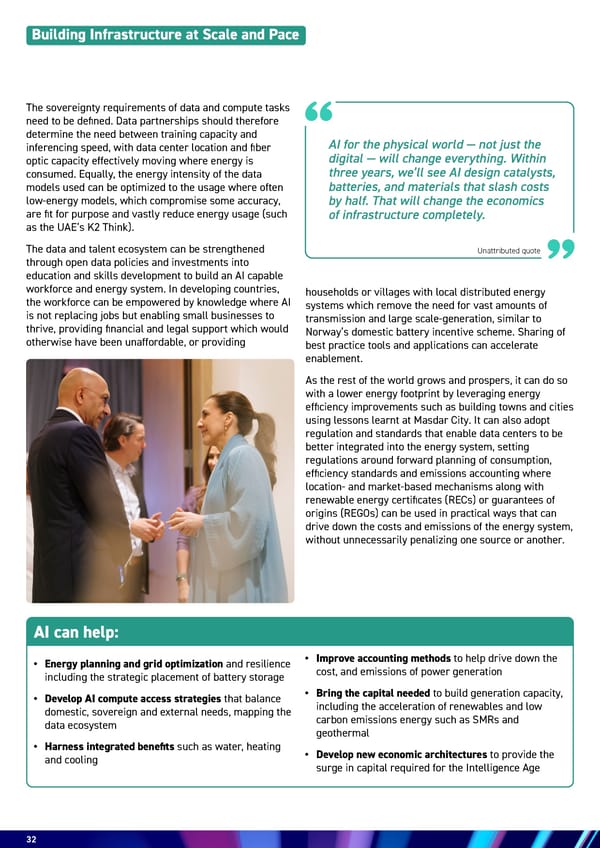32 households or villages with local distributed energy systems which remove the need for vast amounts of transmission and large scale-generation, similar to Norway’s domestic battery incentive scheme. Sharing of best practice tools and applications can accelerate enablement. As the rest of the world grows and prospers, it can do so with a lower energy footprint by leveraging energy efficiency improvements such as building towns and cities using lessons learnt at Masdar City. It can also adopt regulation and standards that enable data centers to be better integrated into the energy system, setting regulations around forward planning of consumption, efficiency standards and emissions accounting where location- and market-based mechanisms along with renewable energy certificates (RECs) or guarantees of origins (REGOs) can be used in practical ways that can drive down the costs and emissions of the energy system, without unnecessarily penalizing one source or another. Building Infrastructure at Scale and Pace The sovereignty requirements of data and compute tasks need to be defined. Data partnerships should therefore determine the need between training capacity and inferencing speed, with data center location and fiber optic capacity effectively moving where energy is consumed. Equally, the energy intensity of the data models used can be optimized to the usage where often low-energy models, which compromise some accuracy, are fit for purpose and vastly reduce energy usage (such as the UAE’s K2 Think). The data and talent ecosystem can be strengthened through open data policies and investments into education and skills development to build an AI capable workforce and energy system. In developing countries, the workforce can be empowered by knowledge where AI is not replacing jobs but enabling small businesses to thrive, providing financial and legal support which would otherwise have been unaffordable, or providing AI can help: • Energy planning and grid optimization and resilience including the strategic placement of battery storage • Develop AI compute access strategies that balance domestic, sovereign and external needs, mapping the data ecosystem • Harness integrated benefits such as water, heating and cooling • Improve accounting methods to help drive down the cost, and emissions of power generation • Bring the capital needed to build generation capacity, including the acceleration of renewables and low carbon emissions energy such as SMRs and geothermal • Develop new economic architectures to provide the surge in capital required for the Intelligence Age Unattributed quote AI for the physical world — not just the digital — will change everything. Within three years, we’ll see AI design catalysts, batteries, and materials that slash costs by half. That will change the economics of infrastructure completely.
 Energy & AI: Twin Engines Turbo-Charging Economic Growth Page 31 Page 33
Energy & AI: Twin Engines Turbo-Charging Economic Growth Page 31 Page 33